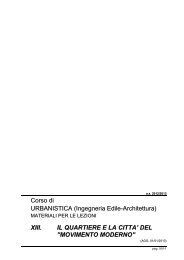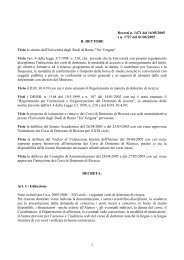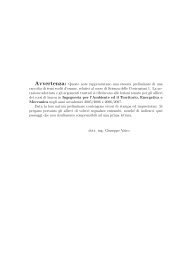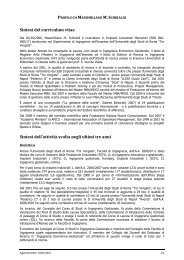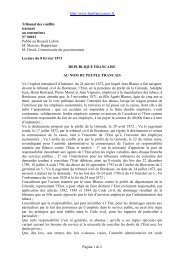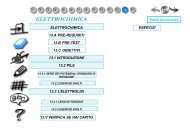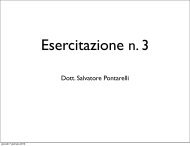Puneet Khandelwal, Soman N. Abraham and Gerard Apodaca
Puneet Khandelwal, Soman N. Abraham and Gerard Apodaca
Puneet Khandelwal, Soman N. Abraham and Gerard Apodaca
Create successful ePaper yourself
Turn your PDF publications into a flip-book with our unique Google optimized e-Paper software.
An additional feature of stem cells is that they are thought to<br />
reside in a protective environment, such as the limbus of the<br />
cornea or the crypts of the intestine. In the case of the<br />
uroepithelium, it is surmised that these pluripotent cells reside<br />
in the basal cell layer of the uroepithelium. Consistent with this<br />
possibility, there is a population of “label-retaining cells” in the<br />
basal cell layer that are positive for bromodeoxyuridine, even<br />
1 yr after labeling (123). These cells are small, have low<br />
granularity, have high �4-integrin expression, <strong>and</strong> are clonogenic<br />
<strong>and</strong> proliferative when cultured (123). However, it remains<br />
to be established whether these label-retaining cells can<br />
differentiate into uroepithelium or whether there are any specific<br />
markers associated with these cells. Initial studies indicated<br />
that putative uroepithelial stem cells may reside in the<br />
ureter/trigone area of the bladder (153), but these regional<br />
differences were not observed in recent studies (123). An<br />
additional method to identify uroepithelial stem cells is implantation<br />
of a mixture of mouse embryonic stem cells <strong>and</strong><br />
embryonic bladder mesenchyme under the kidney capsule<br />
(154). The optimal ratio of these two components allows for<br />
the generation of uroepithelium that, similar to native uroepithelial<br />
tissues, shows expression of UPs in the outermost<br />
umbrella cell layers, expression of p63 in the basal cells, <strong>and</strong><br />
expression of the endodermal-associated transcription factor<br />
Foxa1 (154). By capturing cells at defined time points, it<br />
should eventually be possible to use these techniques to identify<br />
<strong>and</strong> characterize intermediates in the progression of embryonic<br />
stem cells as they develop into endoderm <strong>and</strong> then<br />
progenitor cells, uroepithelial stem cells, <strong>and</strong>, finally, uroepithelium.<br />
An additional uroepithelial cell type that plays an important<br />
role in repair of this tissue is found in the outermost stratum of<br />
intermediate cells (those closest to the umbrella cell layer).<br />
These cells rapidly differentiate into umbrella cells when the<br />
cell barrier is disrupted as a result of senescence, bacterial<br />
infection, or experimental manipulation (12, 104, 125, 149).<br />
After a brief exposure to protamine sulfate, a polycationic<br />
peptide that forms pores in the apical membrane of the umbrella<br />
cells, there is a rapid, but selective, desquamation of the<br />
umbrella cell layer (126). Within 1hoftreatment, UPIIIa is<br />
seen to rapidly redistribute from an intracellular pool to the<br />
newly exposed surface of the intermediate cells, <strong>and</strong> formation<br />
of rudimentary (patchy) ZO-1-positive tight junctions is found<br />
along the borders of these cells. By 24 h, UPs are abundantly<br />
expressed at the surface of the exposed cells <strong>and</strong> ZO-1 is found<br />
to scribe the entire circumference of the cells. By 5 days, the<br />
entire uroepithelium has repaired itself, <strong>and</strong> it appears normal,<br />
except the umbrella cells are smaller in diameter (�15–25 �m)<br />
<strong>and</strong> do not reach their normal size until 10 days after exposure.<br />
Similar results are observed in bladders treated with chitosan,<br />
a positively charged polysaccharide that may act in a similar<br />
manner to protamine sulfate, which causes selective necrosis<br />
<strong>and</strong> desquamation of umbrella cells within 20 min of treatment<br />
(212). In this case, differentiation of newly exposed intermediate<br />
cells is even more rapid, with a scalloped apical membrane,<br />
a complete junctional ring, <strong>and</strong> a trajectorial network of<br />
cytokeratin-20 observed 1 h after chitosan treatment.<br />
The cue(s) that triggers or promotes the rapid differentiation<br />
of intermediate cells is not known. Possible initiating events<br />
may include exposure of uncovered intermediate cells to<br />
growth factors or other mediators in urine [e.g., epidermal<br />
THE UROEPITHELIUM<br />
AJP-Renal Physiol • VOL 297 • DECEMBER 2009 • www.ajprenal.org<br />
Review<br />
F1481<br />
growth factor (EGF)] or loss of cell-cell contacts between the<br />
intermediate cell <strong>and</strong> the overlying basolateral surface of the<br />
umbrella cells. Functional genomics may be a useful tool to<br />
explore differentiation in these model systems <strong>and</strong> has been<br />
used to examine changes in gene expression that accompany<br />
exposure of the uroepithelium to uropathogenic Escherichia<br />
coli (149). These bacterial cells express the FimH adhesin,<br />
which is found at the tip of slender pili, which extend from the<br />
surface of the bacterial cells, <strong>and</strong> specifically binds to UP1a<br />
(145, 148, 238). Binding induces an apoptotic response in the<br />
umbrella cell layer, causing this layer to slough off in �6 h<br />
(148, 149). Within the next 12–48 h, intermediate cells rapidly<br />
differentiate into umbrella cells.<br />
Expression of a number of gene products is affected in the<br />
basal <strong>and</strong> intermediate cell layers during bacterial infection,<br />
including downregulation of bone morphogenetic protein 4 <strong>and</strong><br />
Wnt5a/Ca 2� signaling, both of which are negative regulators<br />
of differentiation (149). In contrast, expression of a positive<br />
regulator of differentiation, E74-like factor, increases. Interestingly,<br />
changes in expression of these gene products are observed<br />
within 1.5–3.0 h of infection, indicating that the signals<br />
for differentiation may be initiated before loss of the umbrella<br />
cell layer <strong>and</strong> are apparently transmitted from the umbrella<br />
cells to the intermediate cells (149). How this information is<br />
transmitted between cell layers is unknown, but it may occur<br />
through gap junctions or through the release of mediators from the<br />
umbrella cells. It will be interesting to determine whether the same<br />
regulators of differentiation are induced by chemical mediators,<br />
such as protamine sulfate <strong>and</strong> chitosan, <strong>and</strong> to determine how<br />
changes in expression of bone morphogenetic protein 4,<br />
Wnt5a, <strong>and</strong> other proteins alter the differentiation program of<br />
the outermost intermediate cell layer.<br />
PARACELLULAR AND TRANSCELLULAR ION, SOLUTE, AND<br />
WATER TRANSPORT BY THE UROEPITHELIUM<br />
One of the most critical roles of the uroepithelium is formation<br />
of a regulated barrier to ion, solute, <strong>and</strong> water flow. This<br />
function is primarily associated with umbrella cells, which<br />
have an exceptionally high transepithelial resistance (20,000 to<br />
�75,000 ��cm 2 ) that results from a high apical membrane<br />
resistance combined with a parallel junctional resistance that<br />
approaches infinity (134, 135). In addition, the apical membrane<br />
of these cells has a low, but finite, permeability to water,<br />
urea, <strong>and</strong> ions (36, 151). It is generally assumed that the urine<br />
held in the bladder is identical to that excreted by the kidneys.<br />
However, the composition of urine can change during its<br />
passage from the renal pelvis to the ureters/bladder (130, 181,<br />
221), <strong>and</strong> the uroepithelium is exposed to very large <strong>and</strong> sometimes<br />
changing concentration gradients of ions, pH, <strong>and</strong> solutes, as well<br />
as mechanical stimuli, as the bladder fills <strong>and</strong> empties. Thus it<br />
should not be surprising that pathways for transport of Na � ,<br />
K � ,Cl � , urea, creatinine, <strong>and</strong> water have been described in the<br />
uroepithelium (134, 135, 167, 175, 189–192, 223). These<br />
pathways, coupled with the large surface area of the uroepithelium<br />
<strong>and</strong> the long storage times of urine, indicate that,<br />
depending on the physiological status of the organism, the<br />
uroepithelium may play an unappreciated role in ion, solute,<br />
<strong>and</strong> water homeostasis.<br />
Claudin expression in the uroepithelium. The junctional<br />
complex is a zone of attachment between adjacent epithelial<br />
Downloaded from<br />
ajprenal.physiology.org<br />
on October 6, 2010



